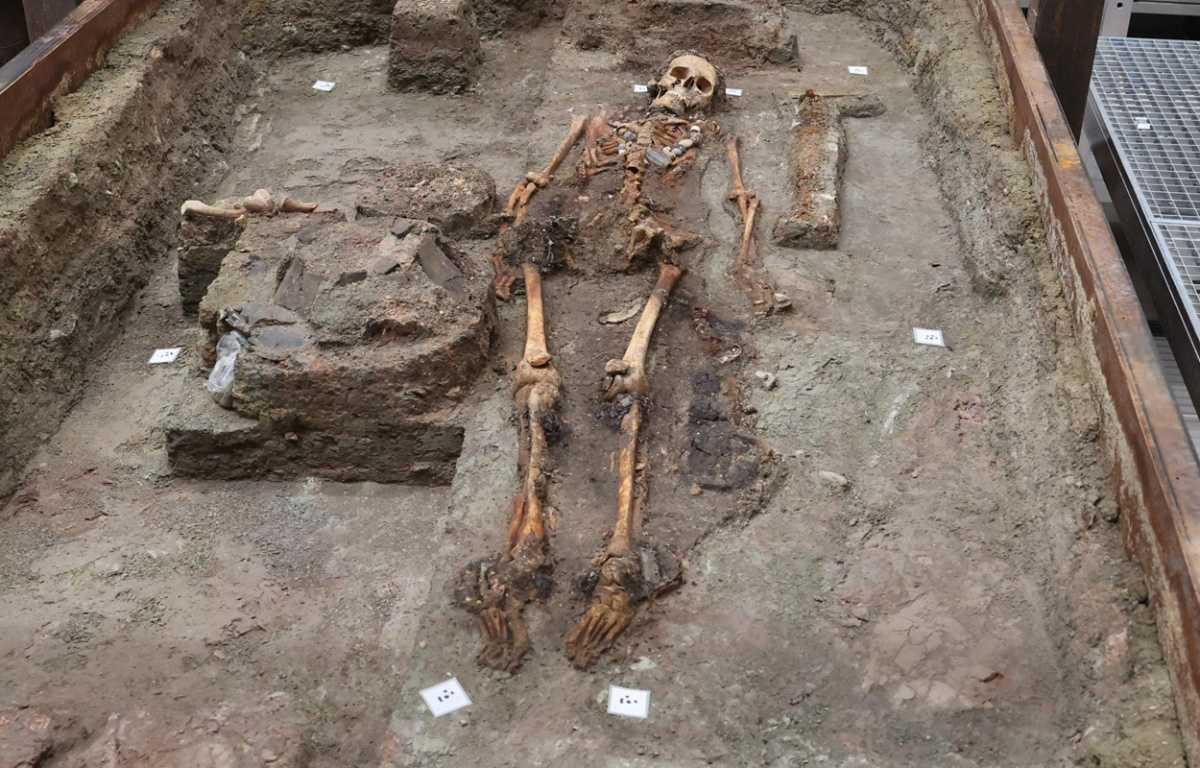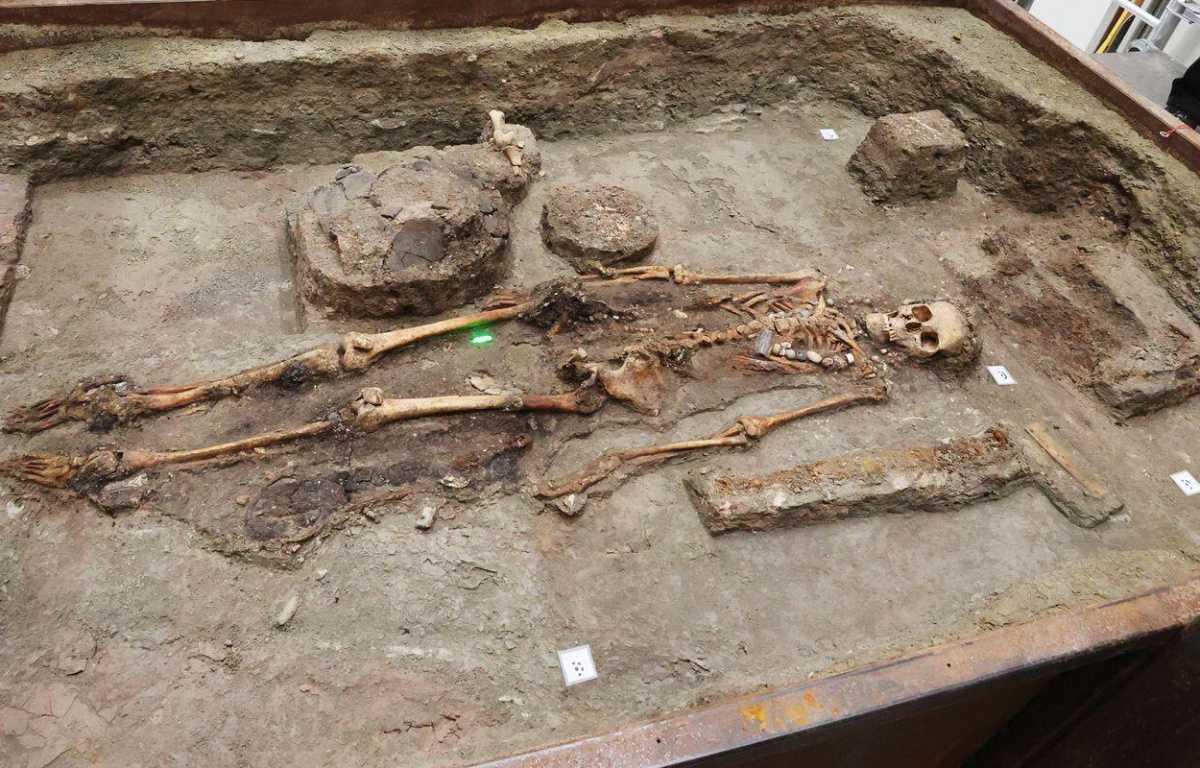Between 2017 and 2021, the Thuringian State Office for Monument Preservation and Archaeology (TLDA) conducted excavations in Kölleda, located in the district of Sömmerda, Germany.
Archaeologists discovered a large settlement spanning 4,000 years of occupation, from the 4th millennium BC to the 7th century AD. Within the settlement were 17 burials from the 6th and 7th centuries AD, a period when the former Thuringian Kingdom had become part of the Frankish Empire.
The burials were placed in wooden chambers filled with numerous grave goods such as high-quality weapons, jewellery, luxury glassware, and rare bronze vessels likely originating from the eastern Mediterranean.
According to the TLDA, the wealth of the burials signify that the deceased were high-status members of Frankish society, 11 of which were buried alongside the remains of decapitated horses.
South of the burial site, a large associated Merovingian-era settlement was uncovered, consisting of around 70 structures that date from 1,300-years-ago.
“Only a few settlement sites from the Merovingian period have been excavated in central Germany to date. In Kölleda, not only was the settlement recorded in its entirety, but the nearby burial ground also made it possible to identify a burial site belonging to a village for the first time,” said the TLDA.
One notable burial was found with two chambers edged with large field stones. To further understand the significance of the discovery, archaeologists extracted the entire burial in a block that was transported to the TLDA in Weimar-Ehringsdorf.
Careful micro-excavations of the block revealed the skeletal remains of a women who archaeologists have named the “Lady of Kölleda”, who died at the age of 25-30. She was buried with various food offerings and personal items, including numerous pieces of gold and silver jewellery, and an intricately crafted bronze basin.
“The objects, of outstanding artistic quality, reveal far-reaching cultural relationships of members of this upper class as far as central Italy and the Mediterranean region.
Header Image Credit : TDLA
Sources : Thuringian State Office for Monument Preservation and Archaeology



